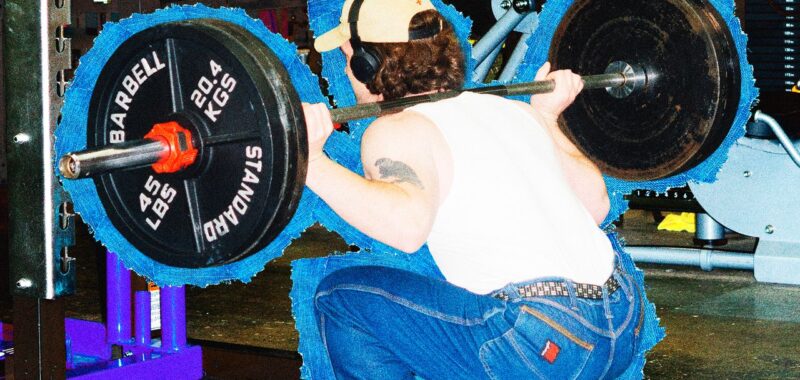Anderegg settled on the Carhartts when he was living in Brooklyn, partly out of an adherence to minimalism. “I’m not an equipment guy,” he explains, and at the time he bought his B11s, they were only his fourth pair of pants, period. “I’d bartend in them and then clear brush, and then would go out to dinner, changing my shirt as a low-key way to get the workouts in throughout the day.”
Which fits in with an accurate, if antiquated, conception of gym clothes—very simply, whatever clothes people owned and which they also wore to the gym. A century ago, in the Zercher era, lifters sweated in what they could find. Those traditional outfits, while more formal and rarely designed for maximal movement, were produced from natural fabrics like cotton or merino wool. (Polyester did not come into use until, by some estimates, the 1950s.) While it’s counterintuitive now to think that baseball players wore wool cardigans to the ballpark, or that strongmen donned merino pants to lift weights, there’s something to be said about the exercise coming first.
As spartan workouts, like kettlebell swings, have increased in popularity, so have clothes with simpler materials than a five-ingredient blend. “Modern workout gear is supposed to be formfitting or tighter,” says Brandon Martinez, an artist in New Jersey, who has been doing what he calls maintenance workouts—bodyweight bench presses, ab work, and light cardio—exclusively in jeans, at the gym, for about a decade. “There’s nothing more comfortable to me than working out in pants that I would wear everyday,” says Martinez, who otherwise does manual labor and makes art in a pair of Carpet Company jeans. In the summer, he wears them to play baseball.
“At most gyms,” Martinez adds, “the coolest people are the postmen and plumbers getting it in on their lunch breaks.”
For some gym-goers, it’s also about not overthinking it. Jack Bensinger, a Brooklyn writer who works out with dumbbells at a gym, tends to do so in jean shorts, or full-length jeans and Clark’s dress shoes, partly because he’s used to moving around constantly in whatever he wears. “I grew up being physical in button-ups and jeans,” says Bensinger, wearing them either while delivering mulch or skateboarding, and, later, going running in Manhattan during his office-job lunch breaks.
Plus, it lowers the buy-in. “People make working out such a big deal,” says Bensinger, “but God gave you the limbs to get this stuff done, so just get in there.”
Ultimately, it’s worth coming back to Rick Owens. In an old interview, he once said that the philosophy behind his uniform look is that it takes him “to the gym, to work in the studio, and then to dinner with a mink coat over it.” It’s a useful framework. It might even be a welcome challenge. After all, anyone can get in a good workout while wearing clothes explicitly designed for that purpose. But not everyone can hit a personal best in pants that might get them kicked out of the gym.

